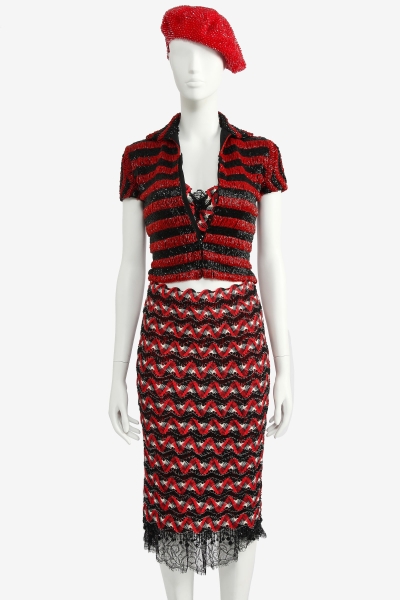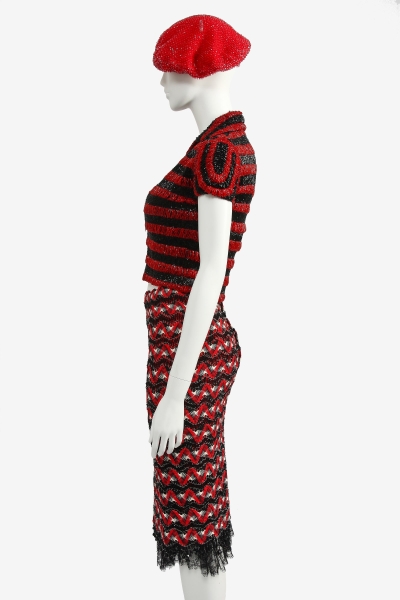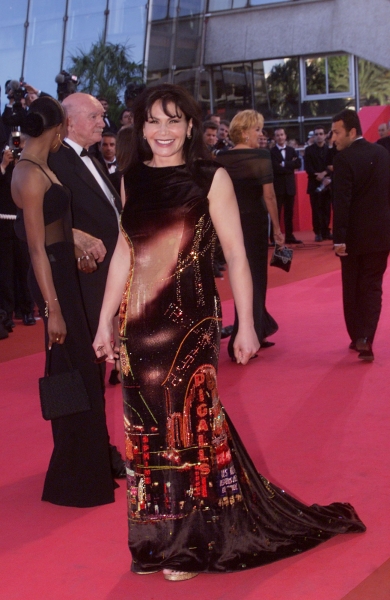Mouna Ayoub, one of the world’s most renowned couture clients, is selling some of her Gaultier Couture looks. The sale, “Jean Paul Gaultier, The Couture Years, The Mouna Ayoub Collection,” of 41 lots will take place on November 25 in Paris, a collaboration between the houses of the French capital’s Maurice Auction and London’s Kerry Taylor Auctions. You’ll accuse me of hyperbole here so accuse away, but this is, I kid you not, a major, ma-juh sale.
Flicking through the catalog gives lots of heart-stopping moments from Gaultier's superlative collections: the fall 1998 black evening trench and halter gown that goes under it (a miraculous feat of chicness—and even more miraculous when you see the inner corseted workings of the dress); the taffeta blouson and floor-length kilt—the latter entirely beaded—from the same collection; a strapless gown from spring 1999 magically frothed up from faded denim and showgirl feathers; a Prince of Wales check pantsuit from fall 2000; an evening dress lavished with beads as a tribute to not only Paris but more specifically the Eiffel Tower and the Folies Bergere, from fall 2000; spring 2003’s denim dungarees which would be very The Simple Life were it not for the fact that they are made out of silk crepe covered with a gazillion teeny tiny beads; and, yet more beads for a crop jacket, bra top, and skirt, from fall 2012, from a collection that was inspired by Amy Winehouse. Many of these gorgeous ensembles were, in the classic haute couture tradition, given names: The denim feathery dress is L’Ecume des Jours, which means Froth of the Daydream, while the Winehouse tribute look is—and this needs no translation—What A Fuckery.
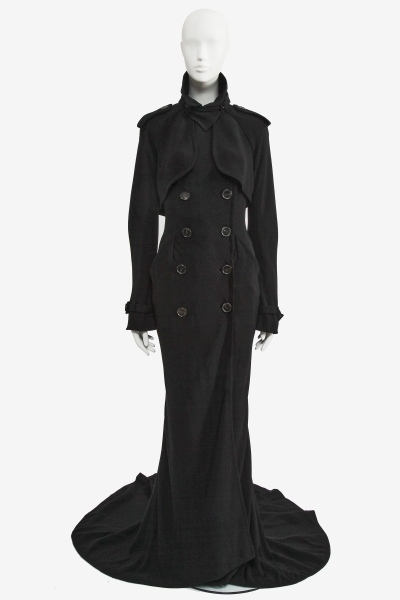
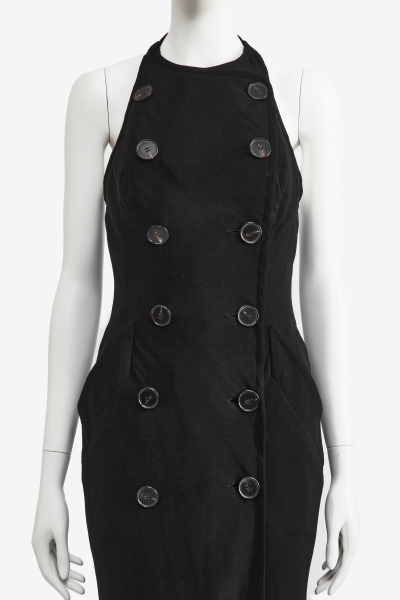
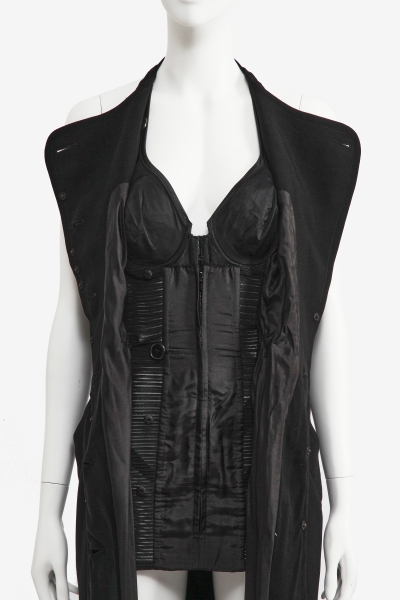
Mouna Ayoub and I chatted via Zoom last week to talk about what her Gaultier Couture pieces have meant to her, and why the designer and they are so special to her; Gaultier, for his part, says of Ayoub, “Mouna appreciates fashion not only for wearing but also for its artistry, treating each garment as a unique creation—and she always selected the most iconic, representative designs!”
Meanwhile, I was happy to be chatting with her. I’d first heard of Ayoub years ago when I lived in London. Over lunch there, a visiting Michael Kors had told me he’d met Ayoub on her yacht, as she had been buying tons of his many-ply cashmere sweaters. At one point, Kors recalled with a laugh, she had mid-conversation, while discussing his clothes, leant over to him, affectionately grasped his arm, and said, “Michael, you are my Gap.” Ayoub roared with laughter when I recounted this story to her, and she was just as passionate and spirited about Gaultier and his couture.
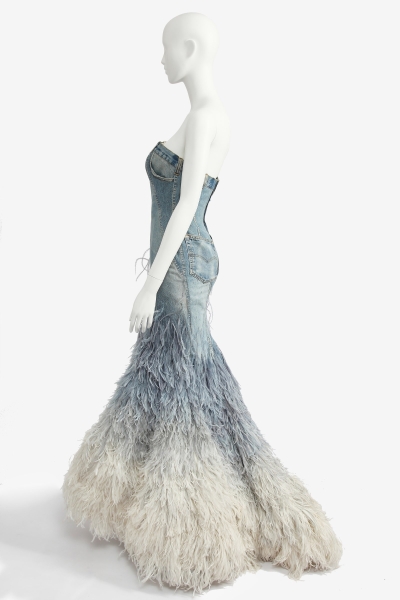

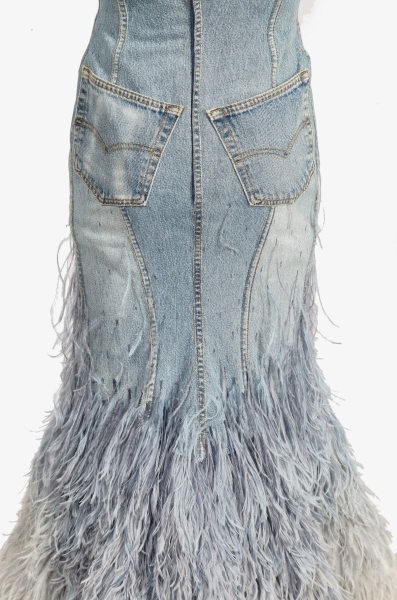
Mouna, why did you feel now was to sell some of your Gaultier Couture?
Well [laughs] I’m older, and I’ve changed a lot—my style is the same, but my lifestyle is different. I still go to Cannes and I still love to wear my Gaultier, but he doesn’t design the couture anymore. Friends of mine have been desperate to get pieces from my collection—they’d seen me on the red carpet in his creations over the years—but they wanted to buy them from me directly, but I don’t want to do business with my friends. It was better to just do the auction.
Are you selling everything of Jean Paul’s designs?
No, it’s about 50%: I chose the looks that I’d worn and I have kept those I hadn’t yet had the chance to wear. The ones I am selling I’ve already been photographed in: I can’t wear them anymore!
Jean Paul launched his couture maison in 1997, and that was the first big new house since Lacroix in the ’80s, though Galliano at Dior and McQueen at Givenchy were also shaking up haute couture in the ’90s. What was appealing to you about Jean Paul’s vision of couture?
Jean Paul had a unique, very witty way of creating clothes, yet they were also very elegant. I have never tried on a gown of his that looked vulgar in any way. It can be extravagant, but it’s always about elegance meeting art and wit—and it’s never boring. I of course loved Galliano’s Dior and I own a lot of pieces from that time and from his own brand. But I loved Jean Paul because there was a very French sense of design. And his work was always about Paris, about the glamour of Paris—but done with a sense of fun.
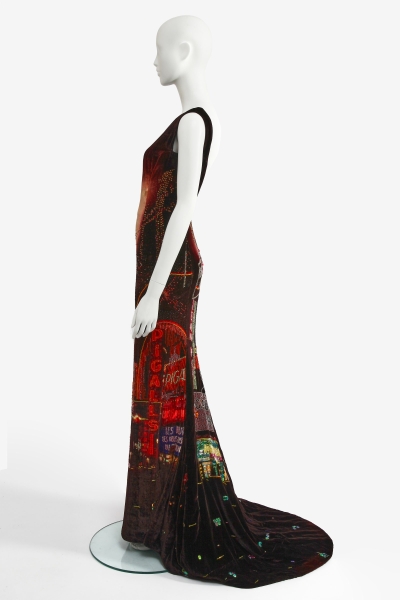
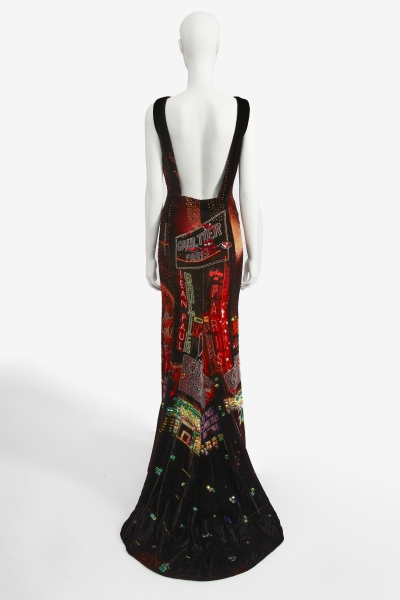

What was the first look you bought?
It was the black evening trench with the dress underneath [lot 1 in the sale]; it has that Parisian elegance we were just talking about. I just loved it. Of course I went on to buy other pieces. Every time he did a couture collection, I went to see it. I didn’t see all the shows, as I was living in Saudi Arabia then, and wasn’t always in Paris, but I would go see the collection when I was in town. Sometimes I would order a piece that came from a collection a year earlier, just because I didn’t want to miss something special.
When did you first wear the trench look?
You will be surprised: I never did [laughs]! I don’t know why. I guess it wasn’t glamorous enough to be worn at Cannes, and it was a little bit too dressy to wear for evenings in Paris. So I never found the right occasion! I didn’t wear the golden jacket and velvet dress [lot 10] either, as the jacket was so heavy and I was going through the menopause and I just couldn’t wear it!
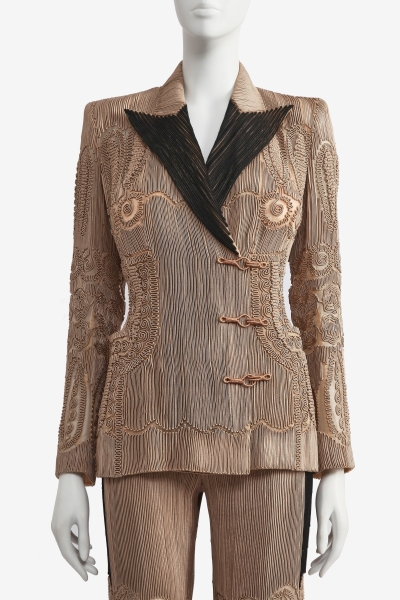
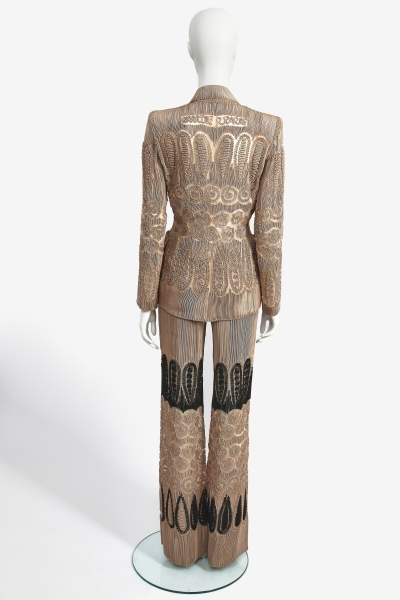
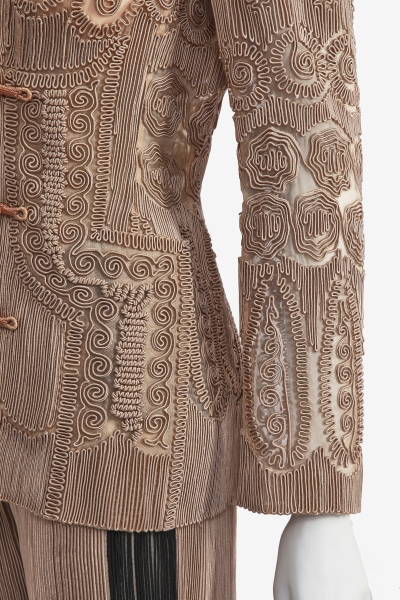
Was there a look you particularly loved to wear?
Yes, lot 25 [an embroidered, gilded evening pantsuit]. Do you know how much thread is used in this? At least three kilometers. When I ordered it, the atelier told me it was three km for the look as worn by the model, and it would take anywhere from three to five km for a client. I am a little bigger than a model [laughs]; I think my suit is about four kilometers.

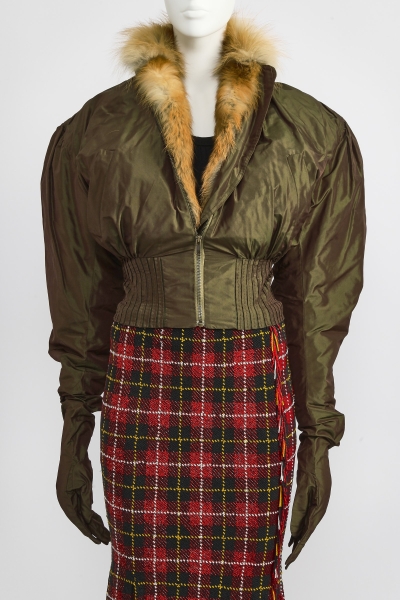
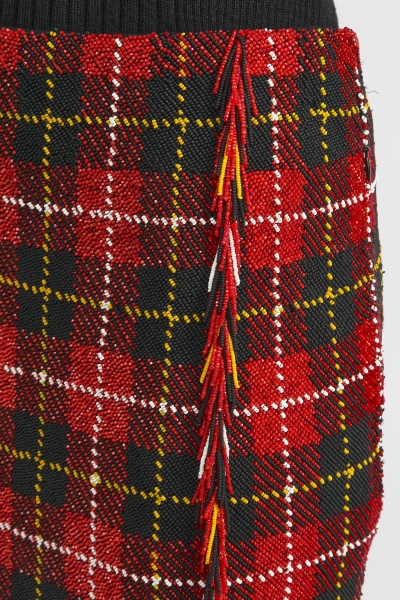
What influenced your choice of looks?
I always look at the silhouette because I have a particular body; I am not built like a typical woman, I am built between a man and a woman, so I always had to look at the silhouettes that would be good for me. But sometimes I had to have something because of the intricate workmanship, like the Scottish skirt [lot 2, which included that floor-length beaded kilt]; I bought the skirt off the runway because they told me it would take at least a year to embroider a new one, and I told them I couldn’t wait that long. So, it’s silhouette, how much work, how long it will take to make—but I usually chose the most elaborate, most intricate, and most sought after piece by the designer.
I can imagine the workmanship, which with Gaultier Couture was always astonishing, is such a powerful draw when you chose something…
If you look at lot 23 [the ‘denim’ dungarees] it’s a very simple silhouette, but it is embroidered all over with beads like caviar; it’s beautiful, really beautiful. This I wore more than once; I loved it so much I wore it, like, three times.
Can you talk me through the ordering process?
I’d go look at the collection closely, touch it, feel it. You have your measurements taken, even though they already have them, in case you’ve gained or lost a kilo or two. Then they make a toile, and you pay 50% of the cost of the look. If the toile is good, the next fitting is with the look in the actual fabric, but without the embroideries. Then that’s adjusted and sent away to be finished, with the third fitting done with the embroidered piece. It’s why I bought the Scottish skirt from the show; I didn’t want to do three fittings and wait over a year.
Jean Paul always came to say hello when I was looking at the collection, and one time he came during the fitting of the ivory dress [lot 26, a tulle gown called, appropriately, The Bride], because I had gone crazy and wanted to get married again—which never ended up happening. I didn’t want to wear a traditional wedding dress, so I thought I would wear a Gaultier dress. In the end, I still got the dress [laughs] and wore it to Cannes. And I am selling it now because I am for sure not getting married!
Have you ever changed your mind about a look?
Not after I have ordered it. I might change my mind after putting the runway look on; sometimes you try it and [laughs] you look horrible in it! And I end up choosing a dress that previously I hadn’t paid any attention to. That happened quite often. I’m not Nostradamus; I can’t always know what will happen—I have to see them, try them, see how I feel about them, and then decide.
It’s a bit like dating: You don’t always immediately know!
Exactly [laughs]! It is like dating; sometimes you have to see the look a few times to know. But price also plays an important role, especially if you’re ordering more than one look. The elaborate pieces are very, very expensive, especially when you might order two or three looks in the price range of 100,000 to 200,000 euros each. I take my time to decide. Maybe I choose one over the other, or maybe I choose a look that is not so elaborate so I can stay within my budget.
Is there one look you can’t ever imagine getting rid of, Mouna?
No. Although I love haute couture very much, and I order a lot, I am not that materialistic. I’m not attached to my things like they’re objects of desire I can’t ever live without. I mean, there was a Gaultier dress with feathers that I sold and then I ordered it again because I loved it so much! And I am keeping the feathery dress for one of my daughters-in-law because she loves Gaultier, and that dress, so much. So I will keep it ’til I die and give it to her then. But all the others? Eventually, in five to 10 years time, I will sell them all.
I am sure the whole process of ordering a couture look is very intimate though and does create a real sense of connection…
It is. You develop such a very big affection for the women who work in the atelier, women who are trying to dress you in the best way, and you respect them for their knowledge and precision. When the lady who was with Gaultier, Jacqueline, decided to leave because Jean Paul stopped doing the couture, she went to Dior and I was so happy, because I am also a customer there. Now she has retired but I still see her, and say hello, and send her flowers.
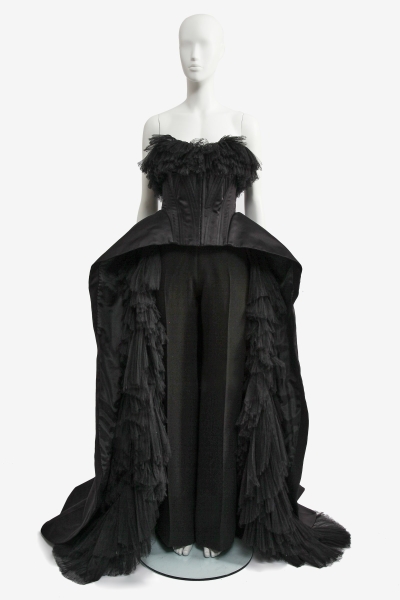
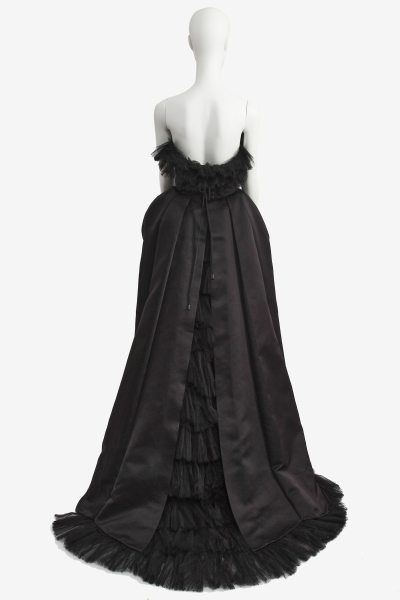
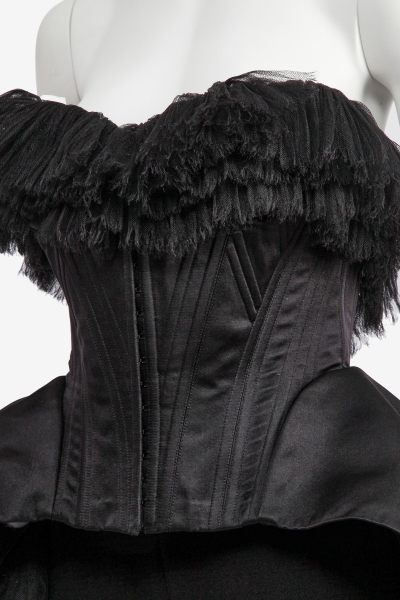
Are you still a couture client?
Yes, I buy four gowns a year. One from Dior, one from Chanel and now I am crazy about Schiaparelli. I have ordered from John at Maison Margiela too. So, yeah, I still do. I love couture. I don’t spend money on anything else. I mean, yes, shoes and bags when necessary, but I don’t buy jewelry. I refuse to go to jewelry events because I know I am never going to buy anything. And they cost the same: A ring from high jewelry is as much as a Chanel haute couture dress. I really, really have a passion for haute couture and not so much [laughs] for any other kind of vanity.
